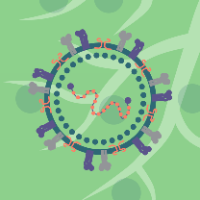RSV vaccines: a new hope but the virus might strike back
Vaccine Insights 2024; 3(1), 47–64
DOI: 10.18609/vac.2024.010
Respiratory syncytial virus (RSV) was discovered in 1956—that it took nearly 70 years to develop working vaccines, speaks to the challenges posed by this virus (by contrast, a SARS-CoV-2 vaccine took 11 months). There are, like the proverbial London buses, now three RSV vaccines at once—two for use in the elderly (Arexvy and Abrysvo™) and one as a maternal vaccine (Abrysvo). In parallel, there is a new monoclonal antibody, nirsevimab. Both the vaccines and the antibody target the RSV-F protein. The current challenge is how to best implement these preventative measures to maximize their impact and reduce the menace of this important viral pathogen. In this review, we will give an overview of the antibodies and the vaccines and look at the immunological, viral, economic, and societal challenges that might arise in the next few years to avoid the return of the virus.
